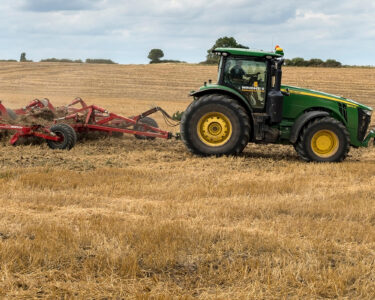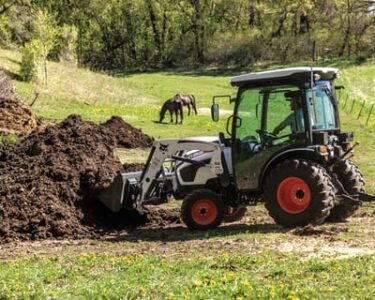The incorporation of GPS (Global Positioning System) technology is one of the most revolutionary developments in tractor technology. We will explore the world of GPS technology in tractors in this article, as well as how precision farming techniques are transforming the agricultural industry by maximizing crop yields and resource management.
The Role of GPS in Tractors
1. Accurate Positioning
GPS technology in tractors provides precise and real-time positioning information. Tractors equipped with GPS receivers can determine their exact location within centimeter-level accuracy. This accuracy is a game-changer in agriculture.
Impact: Accurate positioning allows for precise navigation, reducing overlap and wasted resources.
2. Automated Guidance
Tractors can be set to follow specific routes and paths autonomously using GPS guidance. This automation minimizes the need for constant operator intervention and ensures that field operations are carried out consistently.
Impact: Automated guidance saves time, reduces operator fatigue, and results in more efficient farming practices.
3. Variable Rate Application
GPS technology enables variable rate application of inputs such as fertilizers, pesticides, and irrigation. By analyzing data from various sensors and mapping, tractors can adjust application rates in real-time based on specific field conditions.
Impact: Variable rate application optimizes resource use, reduces waste, and enhances crop health and yields.
Precision Farming Practices
1. Soil Mapping
GPS-equipped tractors can create detailed soil maps for fields. These maps show variations in soil type, moisture, and nutrient levels, allowing farmers to make data-driven decisions.
Impact: Soil maps guide targeted soil amendments and improve crop performance.
2. Yield Mapping
Tractors equipped with yield monitoring systems can create yield maps during harvest. These maps highlight areas of the field with higher or lower yields, aiding in post-harvest analysis and decision-making.
Impact: Yield mapping helps farmers identify yield-limiting factors and make adjustments for future seasons.
3. Remote Monitoring
GPS-enabled tractors are often equipped with telematics systems that provide real-time data on tractor performance. Remote monitoring allows farmers to track fuel consumption, engine health, and maintenance needs.
Impact: Remote monitoring ensures tractors are operating at peak efficiency and minimizes downtime.
Advantages of Precision Farming
1. Increased Crop Yields
By optimizing resource use and tailoring inputs to specific areas of a field, precision farming practices can significantly increase crop yields. This is especially critical in meeting the demands of a growing global population.
2. Resource Efficiency
Precision farming reduces the use of costly inputs like fertilizers and pesticides while improving their effectiveness. It also conserves water by enabling precise irrigation.
3. Environmental Benefits
By minimizing resource waste and reducing the environmental impact of agriculture, precision farming practices contribute to sustainable and responsible farming.
Conclusion
GPS technology in tractors and precision farming practices have transformed agriculture by providing accurate positioning, automation, and data-driven decision-making. These advancements optimize crop yields, improve resource management, and contribute to environmentally sustainable farming practices. As technology continues to evolve, tractors will play a central role in driving innovation and efficiency in agriculture.
FAQs
Q1. Is GPS technology expensive to implement on tractors?
A1. The cost of implementing GPS technology in tractors varies depending on the system’s complexity and features. However, it is often seen as a worthwhile investment due to the benefits it brings in terms of efficiency and resource optimization.
Q2. Can precision farming be applied to all types of crops and agricultural practices?
A2. Precision farming practices can be adapted to a wide range of crops and farming methods. However, the specific technologies and approaches used may vary depending on the crop and region.
Q3. Are there specific training programs for using GPS technology in farming?
A3. Yes, many agricultural institutions and equipment manufacturers offer training programs on using GPS technology in farming. These programs cover topics such as GPS equipment setup, data analysis, and implementation of precision farming practices.
Q4. What are some challenges in adopting precision farming practices?
A4. Challenges may include the initial cost of technology adoption, data management, and the need for specialized knowledge and training. However, the long-term benefits often outweigh these challenges for many farmers.



